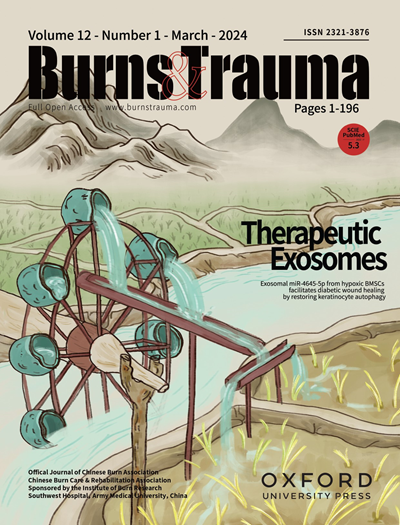Study of bone density according to СT data before and in the remote period after unicondylar knee arthroplasty
IF 6.3
1区 医学
Q1 DERMATOLOGY
引用次数: 0
Abstract
Background. Unicondylar knee arthroplasty has become popular among orthopedists in recent years. The main complication of this technology is the instability of the tibial component of the endoprosthesis due to the development of local osteoporosis in the area of arthroplasty. Patients with decreased bone density are at high risk of developing instability of the tibial component of the endoprosthesis. Therefore, determining the levels of bone mineral density in patients with osteopenia before arthroplasty make it possible to calculate the risk of complications in the long term. Objective: to evaluate the bone mineral density according to the computed tomography (CT) of the tibial plateau resection zone for unicondylar arthroplasty in patients at risk. Materials and methods. The state of three cortical layer zones was assessed: anterior, middle, posterior and 4 zones of the plateau cut plane. The optical density of bone tissue was measured on CT images of the tibial plateau of the knee joint using the Hounsfield scale. Changes in bone structures in the area of placing tibial component of the endoprosthesis were studied in 2 groups of patients: group I — ten individuals who had undergone unicondylar knee arthroplasty 3–6 years ago and complained of negative phenomena in the prosthetic knee, group II — ten patients who had undergone unicondylar arthroplasty 1.2–2 years ago. These patients underwent CT densitometry at the follow-up examination. Results. Before arthroplasty, the maximum optical density of bone tissue was statistically the same. The density of the cortical layer was maximal in the anterior part of the bone (~ 720 HU), minimal — in the posterior part (580 HU). For the spongy bone zone, the maximum optical density was observed in the anterior part (~ 470 HU), and in the posterior part, it was lower. In 3–6 years, patients of group I showed a significant decrease in the optical density of the bone, both in its cortical layer and in the cancellous tissue. The greatest losses were detected in the medial zones of the cancellous bone. Patients had areas of cortical layer resorption, and in some individuals, its complete absence. At the same time, the absorption index of the cortical layer in the areas of destruction did not exceed 100 HU. The maximum optical density of the cortical layer in the zones also decreased. In patients of group II, 1.5–2 years after arthroplasty, there were no noticeable changes in the bone structures in the surgery area. Changes occurred in the medial zones of the cancellous bone of the tibial plateau. Patients with osteopenia reported changes in bone optical density already in the first years after arthroplasty, although they do not lead to instability of the tibial component of the endoprosthesis. Conclusions. Patients with decreased bone density (osteopenia) during joint arthroplasty are at risk of developing local osteoporosis in the area of bone resection. The first signs of resorption of the cancellous bone can be observed 1.5–2 years after arthroplasty. Timely treatment measures can slow down the further progression of osteoporosis.根据СT资料对单髁膝关节置换术前后骨密度的研究
背景。近年来,单髁膝关节置换术在骨科医生中越来越流行。该技术的主要并发症是由于关节置换术区局部骨质疏松症的发展导致假体胫骨部分的不稳定。骨密度降低的患者发生假体胫骨部分不稳定的风险很高。因此,在关节置换术前确定骨质减少患者的骨密度水平,可以计算长期并发症的风险。目的:评价高危单髁关节置换术患者胫骨平台切除区CT骨密度。材料和方法。评估皮质层前、中、后3个区及平台切面4个区状态。采用Hounsfield量表在膝关节胫骨平台的CT图像上测量骨组织的光密度。研究两组患者放置假体胫骨部位骨结构的变化:1组(3-6年前行单髁膝关节置换术的10例患者)和2组(1.2-2年前行单髁膝关节置换术的10例患者)。这些患者在随访检查时接受了CT密度测量。结果。在关节置换术前,骨组织的最大光密度在统计学上相同。骨皮质层密度在骨前部最大(~ 720 HU),在骨后部最小(580 HU)。对于海绵骨区,光密度在前部最大(~ 470 HU),后部较低。3-6年,I组患者骨皮质层和松质组织的光密度明显下降。最大的损失是在松质骨的内侧区域。患者有皮质层吸收的区域,有些人完全没有。同时,破坏区皮质层吸收指数不超过100 HU。区域内皮层的最大光密度也有所下降。II组患者,关节置换术后1.5-2年,手术区骨结构无明显变化。变化发生在胫骨平台松质骨的内侧区域。骨量减少的患者在关节置换术后的头几年已经报告了骨光密度的变化,尽管它们不会导致假体胫骨部分的不稳定。结论。在关节置换术中骨密度降低(骨质减少)的患者在骨切除区域有发生局部骨质疏松的风险。松质骨吸收的第一个迹象可以在关节置换术后1.5-2年观察到。及时的治疗措施可以减缓骨质疏松症的进一步发展。
本文章由计算机程序翻译,如有差异,请以英文原文为准。
求助全文
约1分钟内获得全文
求助全文
来源期刊

Burns & Trauma
医学-皮肤病学
CiteScore
8.40
自引率
9.40%
发文量
186
审稿时长
6 weeks
期刊介绍:
The first open access journal in the field of burns and trauma injury in the Asia-Pacific region, Burns & Trauma publishes the latest developments in basic, clinical and translational research in the field. With a special focus on prevention, clinical treatment and basic research, the journal welcomes submissions in various aspects of biomaterials, tissue engineering, stem cells, critical care, immunobiology, skin transplantation, and the prevention and regeneration of burns and trauma injuries. With an expert Editorial Board and a team of dedicated scientific editors, the journal enjoys a large readership and is supported by Southwest Hospital, which covers authors'' article processing charges.
 求助内容:
求助内容: 应助结果提醒方式:
应助结果提醒方式:


